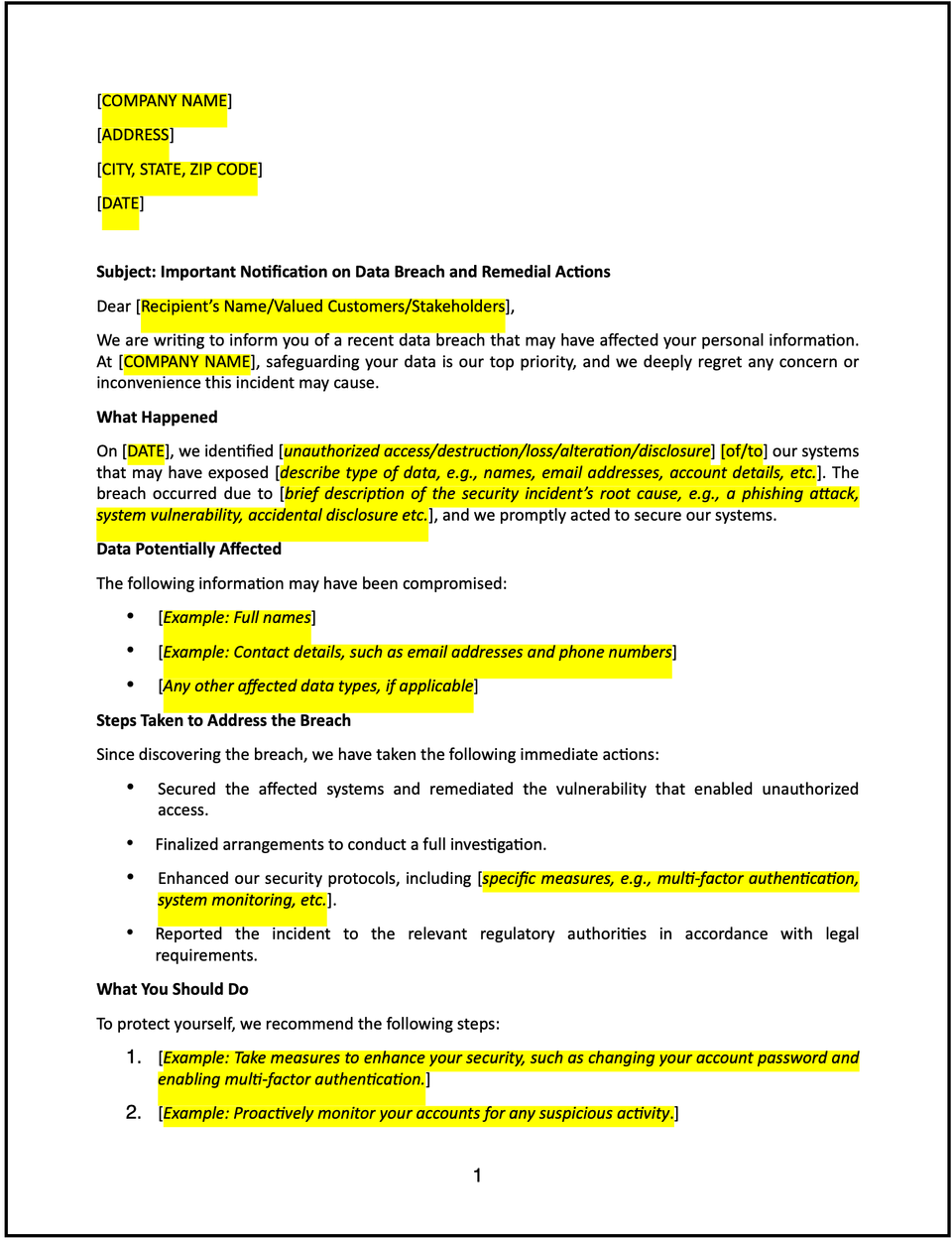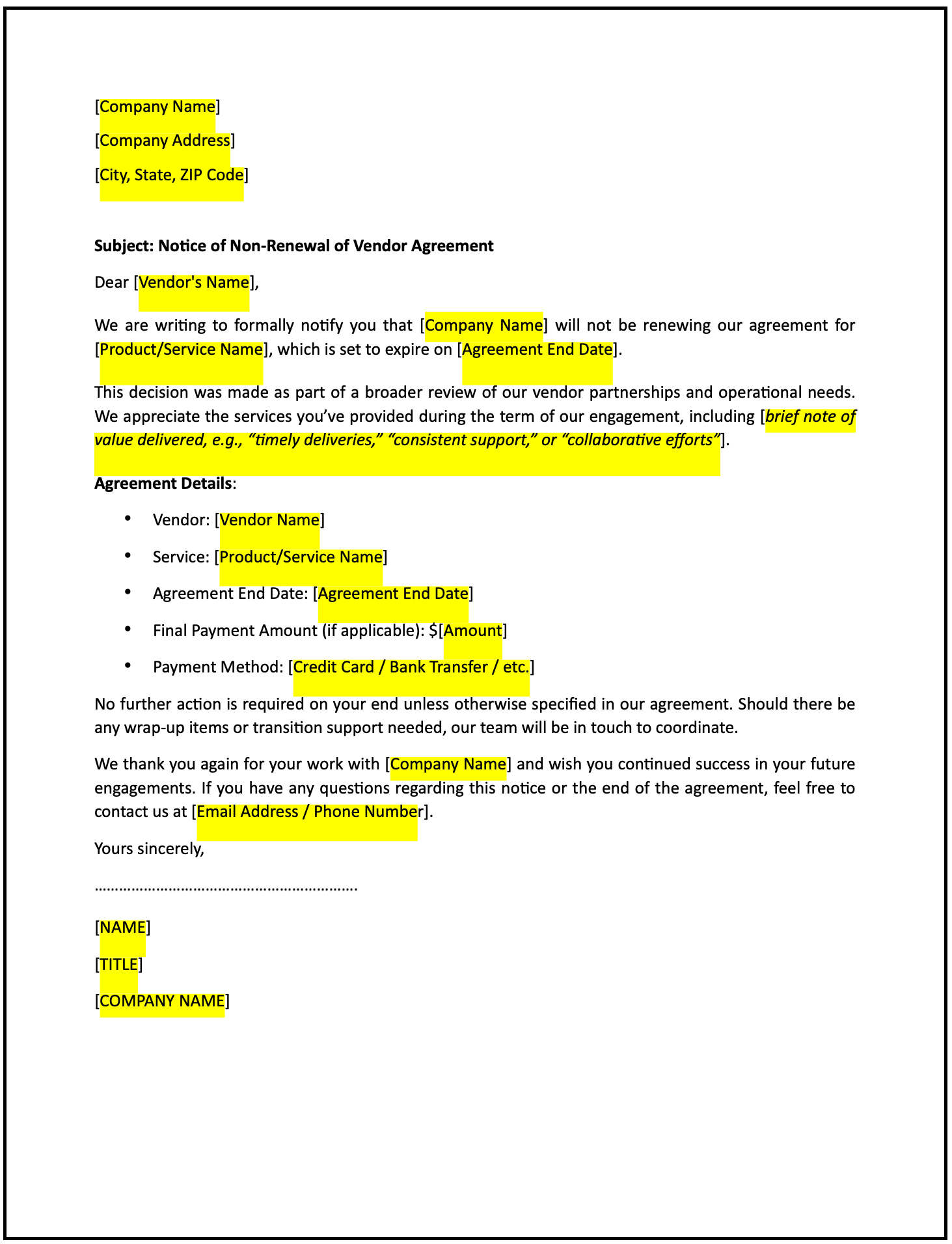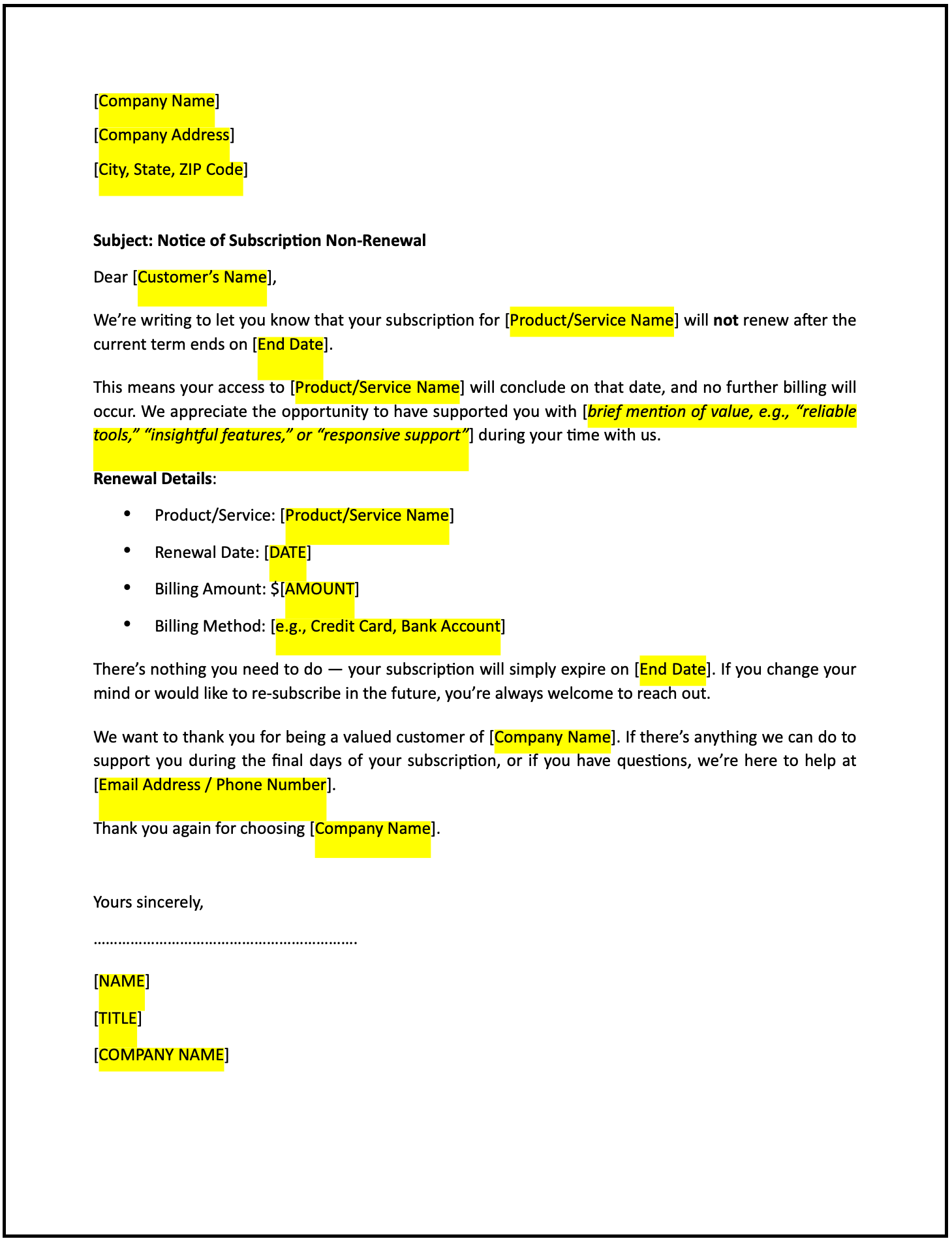Notification letter of data breach and steps taken: Free template

Notification letter of data breach and steps taken
Notifying customers, stakeholders, or regulatory bodies about a data breach is a critical step in maintaining transparency and mitigating potential harm. This letter provides a professional way to disclose the breach, explain its impact, outline corrective actions, and reassure recipients of your commitment to security.
How to use this notification letter of data breach and steps taken
- Open with acknowledgment: Start by clearly stating that a data breach has occurred and express regret for the situation.
- Provide a summary: Briefly describe the nature of the breach, when it occurred, and how it was discovered.
- Explain the impact: Specify the data potentially affected and how it may impact the recipient. Avoid overly technical jargon but remain transparent.
- Outline corrective actions: Detail the immediate steps taken to contain the breach, secure systems, and prevent future incidents.
- Offer support: Include resources or services available to assist those affected, such as credit monitoring or helplines.
- Reassure commitment: Emphasize your dedication to data security and your ongoing efforts to strengthen safeguards.
- Maintain a professional tone: Ensure the letter is clear, empathetic, and focused on addressing concerns.
- Invite engagement: Provide contact information for recipients to ask questions or seek further assistance.
Benefits of using a notification letter of data breach and steps taken
This letter template ensures a structured and professional way to communicate a data breach while fostering transparency and trust. Here’s how it helps:
- Builds trust: Promptly notifying stakeholders demonstrates accountability and a commitment to transparency.
- Reflects professionalism: A well-crafted letter reinforces your brand’s integrity and dedication to ethical practices.
- Mitigates harm: Providing resources and clear steps reduces the potential impact on affected individuals.
- Prevents misinformation: Proactively addressing the situation helps control the narrative and reduce speculation.
- Strengthens relationships: Demonstrating care and responsiveness fosters goodwill despite the circumstances.
Tips for writing an effective notification letter of data breach and steps taken
- Be specific: Clearly describe the breach, its impact, and the actions being taken to address it.
- Use professional language: Maintain a respectful and empathetic tone to reassure recipients of your commitment.
- Focus on solutions: Highlight the corrective measures and resources available to assist those affected.
- Reassure commitment: Emphasize your dedication to improving security and preventing future breaches.
- Keep it concise: Focus on the key details without overwhelming the recipient with excessive information.
Frequently asked questions (FAQs)
Q: What details should I include in this letter?
A: Include a summary of the breach, affected data, corrective actions, and support resources for recipients.
Q: Should I apologize in this letter?
A: Yes, offering a sincere apology demonstrates empathy and accountability for the breach.
Q: Who typically receives this letter?
A: Send the letter to all affected customers, stakeholders, or regulatory bodies as required by applicable laws.
Q: How formal should this letter be?
A: The tone should be professional yet empathetic, focusing on transparency and reassurance.
Q: When should this letter be sent?
A: Send the letter as soon as possible after confirming the breach to comply with legal requirements and build trust.
Q: Can this letter include a goodwill gesture?
A: Yes, offering services like credit monitoring or identity theft protection can demonstrate care and help mitigate harm.
Q: Is acknowledgment from the recipient required?
A: While not required, encouraging recipients to contact you with questions or concerns ensures open communication.
This article contains general legal information and does not contain legal advice. Cobrief is not a law firm or a substitute for an attorney or law firm. The law is complex and changes often. For legal advice, please ask a lawyer.


